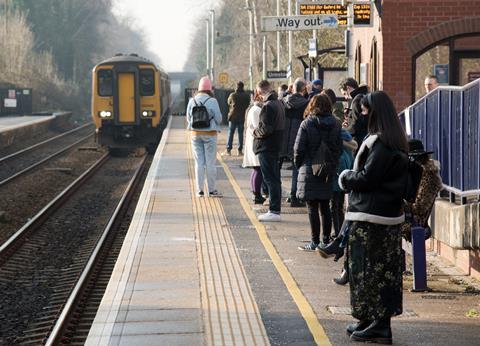
UK: The rail industry’s finances showed signs of recovery from the effects of the pandemic in the last financial year but passenger revenue remained well below pre-pandemic levels, according to the latest statistical report from the Office of Rail & Road.
The Rail Industry Finance report published on November 29 covers income, expenditure and government funding for the year to March 31 2022.
The key findings include:
- the UK rail industry as a whole (including Northern Ireland) received £21·3bn of income in the financial year, from government (£13·3bn), fares and other passenger income (£6·5bn) and other sources (£1·5bn). Adjusted for inflation this is a decrease of 0·9% from 2020-21;
- fare income was £5·8bn, which when adjusted for inflation represented an increase of £3·9bn from 2020-21 as a result of passengers returning to the railways. However, it was 46·6% lower than in 2019-20, the last year before the pandemic;
- government funding was £13·3bn, down 24·4% from the previous year as fares income was higher. However, this support continues to be higher than the £6·8bn provided in 2019-20;
- industry costs, excluding financing costs, decreased by £0·2bn to £20·0bn;
- investment in new and enhanced rail infrastructure and rolling stock increased by £1·8bn to £7·6bn, with the majority of this increase (£1·6bn) being accounted for by High Speed 2 work;
- total industry expenditure (including financing costs) was £22·8bn, including £10·9bn of franchised train operator expenditure, £10·7bn of Network Rail expenditure and £1·2bn of expenditure by other parts of the rail industry. The 4% annual increase was because of to Network Rail’s financing costs of £2·8bn, a 57·8% increase largely due to inflation on index-linked debt.



